Everybody poops. Wisconsin is a national leader in using it to monitor public health.
In September 2020, the height of the COVID-19 pandemic, public health officials and researchers started hunting for signs of the virus' spread in an unexpected place: our poop.
Samples of municipal wastewater provided a wealth of information that – combined with diagnostic lab testing, hospitalization rates, and other disease surveillance data – could warn officials of a rise in cases, help them track evolving forms of the virus and inform public health policy.
In Wisconsin, a trio of research and public health organizations collaborated to expand wastewater disease testing like never before.
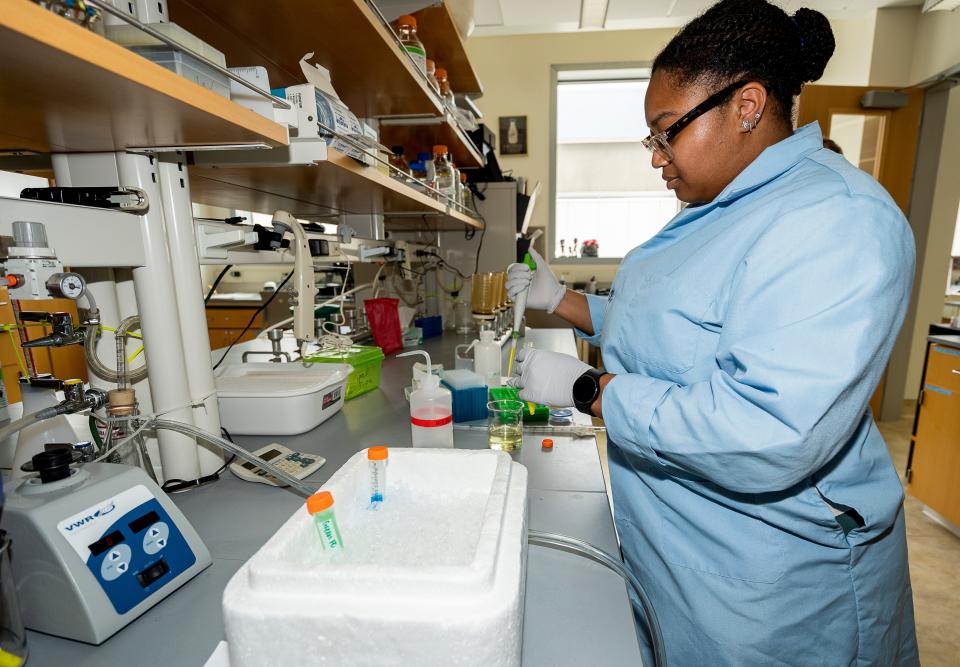
At the University of Wisconsin-Milwaukee, molecular biologist Sandra McLellan emerged as a national expert, bringing some 20 years of experience researching wastewater and what happens when it gets into our lakes and rivers to the state's new surveillance system.
At the University of Wisconsin-Madison, scientists at the Wisconsin State Laboratory of Hygiene had the capacity to process large numbers of samples quickly and efficiently, allowing the program to coordinate with wastewater treatment facilities and ultimately cover half the state's population.
And at the Wisconsin Department of Health Services, epidemiologists and public health experts coordinated between their labs, the U.S. Centers for Disease Control and Prevention, local public health departments and others. They compiled data into a public dashboard and translated it into action.
Today, wastewater disease surveillance has become a key public health tool, even as the technology continues to evolve and improve. Wisconsin's system covers 68% of the state's sewered population.
And it stands out nationally.
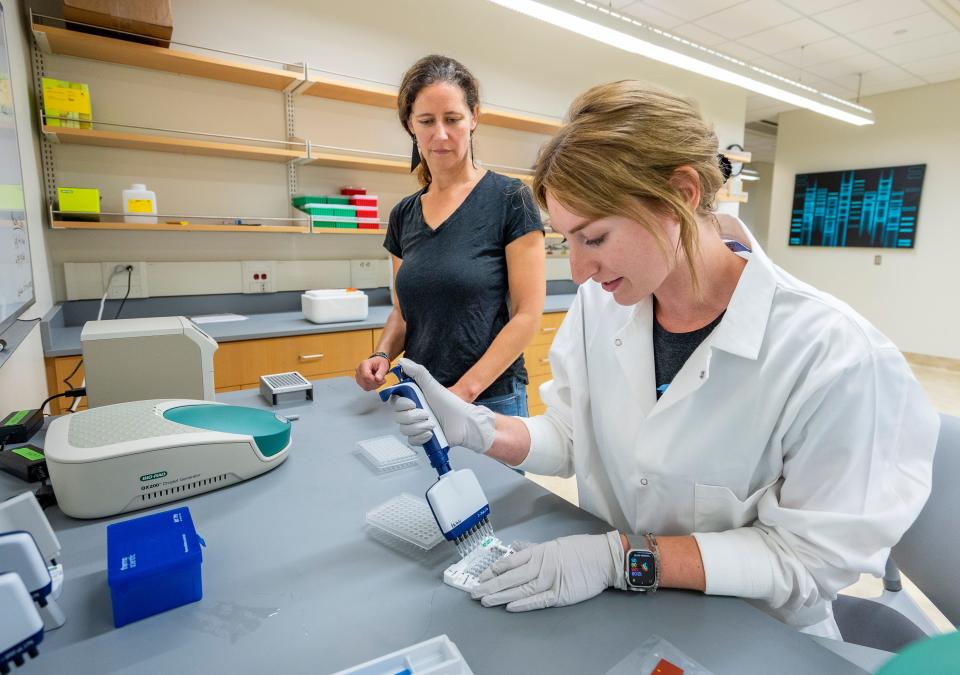
Last month, the CDC announced Wisconsin's wastewater program was one of four "National Centers of Excellence," a designation that will position it at the forefront of efforts to improve and expand wastewater's role in monitoring public health.
"When we began the wastewater surveillance program in Wisconsin in 2020, it would’ve been hard to imagine the growth that we have seen in this area of science and public health over the past three years," Ian Pray, coordinator of the Wisconsin Wastewater Surveillance Program at DHS, said in an email interview. "Now we have the ability to detect a wide array of infectious diseases in the wastewater and rely on this type of surveillance as a core tool in our public health toolbox."
And as Wisconsin experts look to the future of wastewater disease surveillance, they're asking new questions that will shape its use, potentially, for years to come. Those include how to make the tracking more reliable, more precise, more comparable across the country. Who does the data leave out? What ethical limits should be in place?
Wastewater testing is cheap, reliable and can cover huge swaths of the state, making it likely to become a mainstay piece of public health data, experts said. The science is advancing so fast that McLellan, despite decades of experience, said she found it hard to imagine what even the next five years could bring.
"It's uncharted territory," McLellan said.
Wisconsin has become a national leader
Well before the COVID-19 pandemic, McLellan's lab was investigating the many connections between wastewater and human health. One of those investigations seeks to understand if wastewater can be used to track the spread of antibiotic-resistant bacteria through communities.
When COVID-19 locked down the country, the idea of testing wastewater for the virus became a natural extension of the lab's work, she said.
"Our own interest has really expanded because, originally, it was kind of a research question: Can we do this? How does it reflect the population?" she said. "Now, there's an added layer of: If you're going to generate this data, how do you make it useful for public health?"
The surveillance system faced critical logistical questions. How often should samples be collected? Where in the wastewater system should they be collected from? How quickly could the tests be run? How often should the data be reported? How should it be interpreted and communicated it to the public?
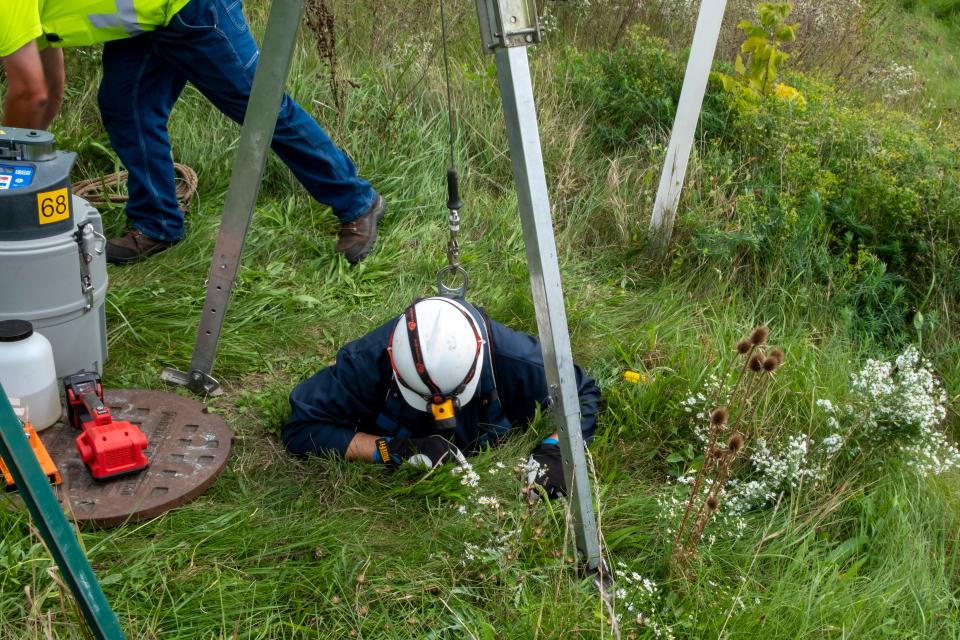
And, perhaps the biggest question of all, for public health leaders, was how the data would be used to make public health decisions.
The work took off, with experts across the country testing different approaches and sharing what they learned. The advancements were beyond what many could have fathomed. Once it was shown that wastewater could be used to track trends in COVID-19 cases, some started asking if genetic sequencing could be brought in to pinpoint COVID variants.
McLellan admits to being one of many who thought, "No way."
And then it happened.
"I'm not sure where the last three years went," said McLellan. "I feel like I was in a time warp there for a while."
The pandemic gave scientists a rare chance to test out the reliability of the wastewater surveillance systems as they built them up. Diagnostic testing programs were generating huge amounts of data as thousands of people got their noses swabbed. The wastewater results could be compared right away to case rates, hospitalizations and other trends.
The CDC established the National Wastewater Surveillance System with Wisconsin and five others as founding members. Wisconsin demonstrated the value of having an academic, public health and state lab all working together on the effort, said Martin Shafer, a senior scientist at UW-Madison and the Wisconsin State Lab of Hygiene.
"It was an amazing couple of years where close to 70 or 80 different jurisdictions (were getting started)," said Shafer, adding, "Everybody kind of did something a little bit different. So that spurred a lot of innovation."
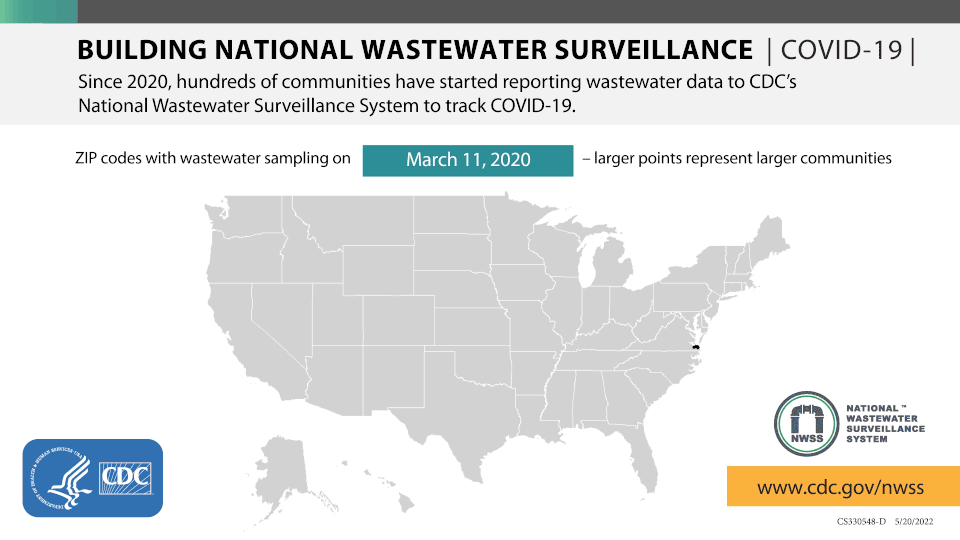
With the funding and designation as a Center of Excellence, Wisconsin will be one of four hubs focused on further improving the national surveillance system. Wisconsin will be among the first to try out new testing methods. If they work, state experts will teach others how to perform the tests. They'll also consult and guide wastewater surveillance programs around the country in an effort to establish standards that make the data more consistent and comparable nationwide.
One way in which the surveillance system is growing is by including more diseases. Wisconsin has spent two years testing wastewater for the seasonal flu and respiratory syncytial virus, or RSV. That data "could be enormously helpful for alerting hospitals and the public to coming seasonal surges," Pray said, and DHS hopes to publicly release it soon.
In New York, wastewater testing helped public health officials track and respond to a polio outbreak.
Experts are also looking into the benefits of testing narrower subsets of the population.
"Right now, all of our testing in Wisconsin takes place at wastewater treatment facilities – so any results we get are telling us the prevalence of a disease across an entire city or town," Pray said. "But many groups are exploring the use of wastewater testing on planes, health care facilities, or other smaller scale settings. Will that ultimately be a useful tool for identifying new or emerging pathogens before they spread elsewhere?"
Researchers see 'goofy' data and face ethical questions
As with any burgeoning technology, a future in which we track more diseases through wastewater, potentially narrowing in on smaller locations and groups of people, raises important questions.
Many of those are technical: Which diseases are best suited for wastewater surveillance? What is the best way to test for each disease? What are the appropriate public health responses to the data on each disease?
"There is so much potential in wastewater for public health, but we have to also resist the tendency to expand by simply testing more diseases in more places without careful thought," said Pray. "Each time we add a new disease or test in a new setting we need to be sure we understand what those results mean and what public health action or recommendation we would make based on a given finding."
For diseases such as COVID-19 and the flu, tracking broad trends and emerging variants through wastewater can guide public health officials on where to send supplies, testing resources and focus messaging about vaccines.
But diseases like polio require a different approach.
Tracking polio through wastewater is tricky, McLellan said, because when people get the oral vaccine, they can shed the virus in their feces. That makes it hard to use wastewater alone to prove active infections. Wastewater data on polio is most useful if health officials know of an infected person to begin with, she said. Then, they can use wastewater to investigate if it's just an isolated case or if the virus is spreading through a particular community.
Another question is how to deal with data that can, in McLellan's words, be "kind of goofy."
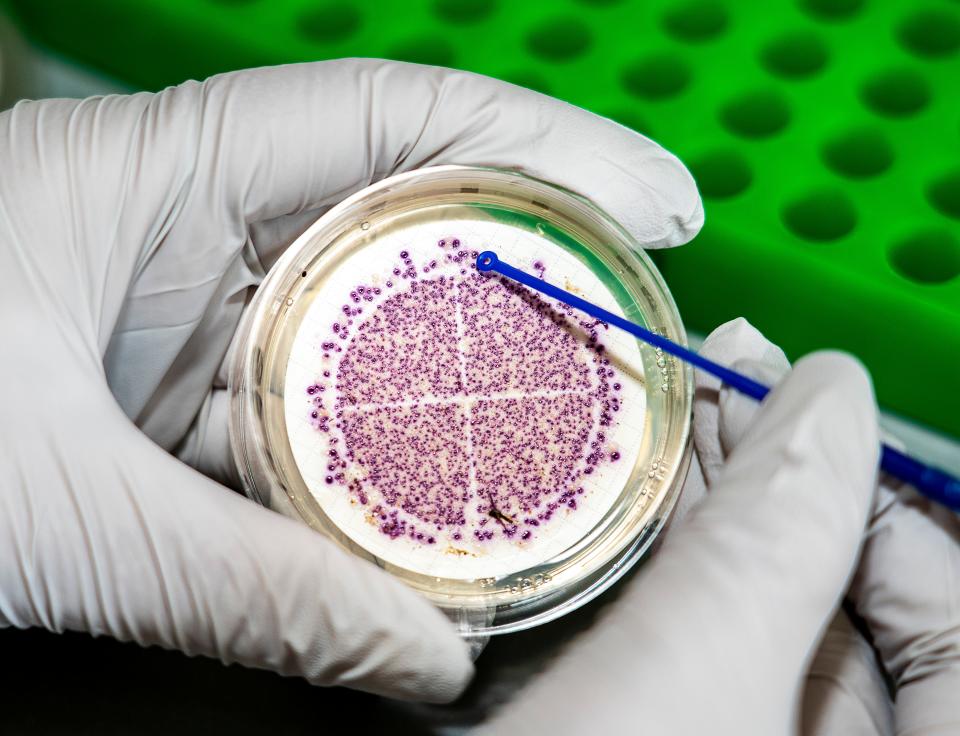
Unlike clinical labs tests, which test one patient at a time and have been fine-tuned and standardized over many years, wastewater disease is relatively new at this scale, and it casts a wide net. Wastewater analyses are not simple "yes/no" tests, McLellan said. Small things can influence readings, making it important that it is used alongside other measurements data and in context of trends over time.
Last month, McLellan partnered with researchers to publish a paper on how to distinguish normal "noise" in wastewater data from an actual case surge.
"If you take the same sample and run it three times, it can be 30% different," she said. So public health officials have to recognize that changes could just be natural variability.
More health news: Air pollution may be a leading cause for antibiotic resistance globally, new study finds
Experts also see potential in the idea of sampling from different parts of sewage systems to drill down into where outbreaks are starting.
Could a sewage from a single school flag the start of an influenza outbreak? Could it be used to catch outbreaks of drug-resistant "superbugs" in hospitals and other health facilities, perhaps even to figure out how they spread between facilities?
The prospect of testing on the scale of a single neighborhood or building raises many ethical questions for experts.
How small is too small? At what point do you risk identifying or stigmatizing people? What other types of surveillance could that open the door to?
Shafer used the example of wastewater being used to monitor illicit drug use. There should be a firewall between the work of public health and law enforcement, he said.
"I think we have to reflect the values of the communities that we're doing the surveillance in," Shafer said.
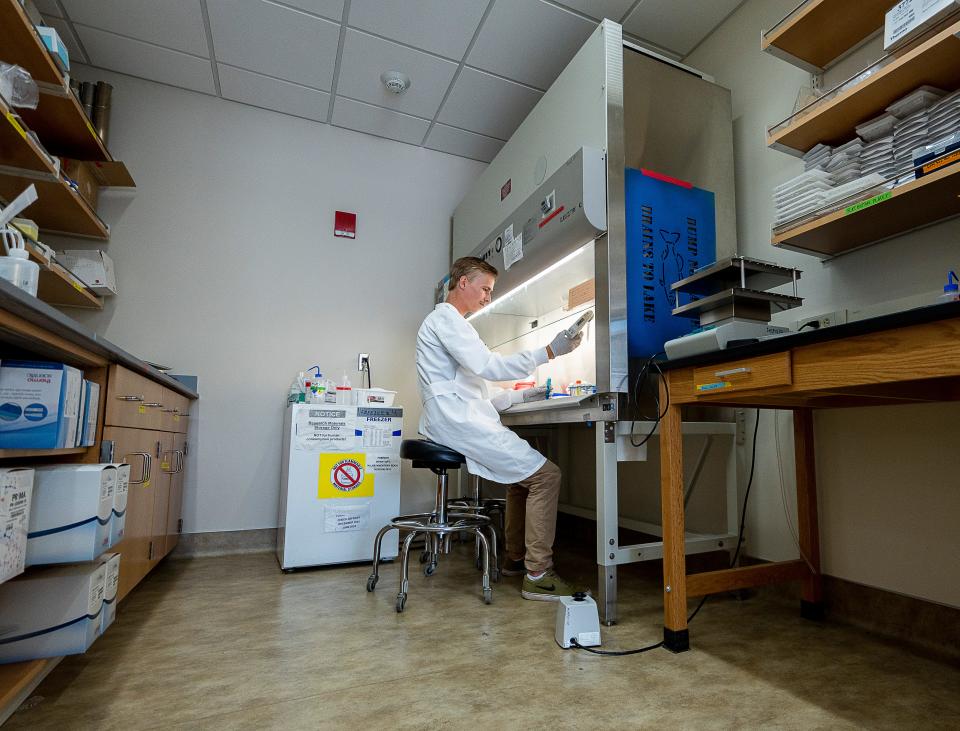
That connection to the public is especially important when considering no data set is perfect. Wastewater does not represent everyone: According to the CDC, 20% of the U.S. population is not connected to a municipal wastewater system. Still, wastewater data could fill in major gaps in public health surveillance, because it includes people regardless of insurance status, ability to access health care, income or race.
For subscribers: How does our body know how to take shape from a cell? Scientists are closing in on answers.
The ethical questions may be big, but they present a chance for scientists and public health officials to engage with the communities they are seeking to serve, Shafer said. The expansion of the state's wastewater disease surveillance system can be a chance to illustrate the work of public health and increase trust in it, he said.
"It's an opportunity to interact with the community and talk through these ethical issues," Shafer said. "And to show the world public health is not a polarizing issue."
Contact Devi Shastri at 414-224-2193 or DAShastri@jrn.com. Follow her on Twitter at @DeviShastri.
This article originally appeared on Milwaukee Journal Sentinel: Wisconsin leads the way in checking wastewater for diseases


